Category: Home Inspection
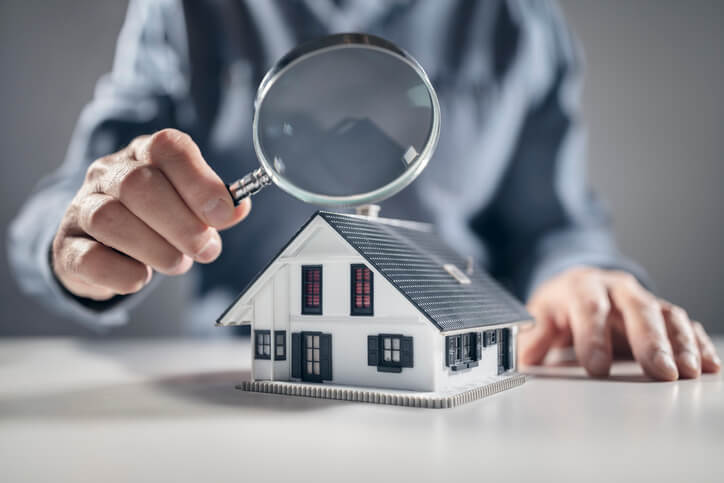
As a home inspector, your inspection reports convey key findings to clients and stakeholders. These findings help clients make important decisions on purchases, repairs, modifications, and other relevant actions. For this reason, home inspection training places significant emphasis on the quality of your reports, encouraging a strategic approach to the information you convey.
To ensure effective reporting, it’s essential to adhere to specific techniques and structured formats and account for all necessary information accurately. Discover three vital tips in this blog post to help you consistently deliver precise, insightful home inspection reports.
1. Embrace Structure and Organization After Your Home Inspection Training
While writing home inspection reports, you need to adopt a structured, systems-based approach so your message is well-documented and well-received. Adopting a logical flow to the information provided and using a standardized format gets the job done effectively.
This often means organizing your report chronologically, starting with the property’s exterior and progressing inward. It could also mean progressing in detail from structure and exteriors to roofing, plumbing, electrical, HVAC, etc.
While home inspection training provides the necessary structure, effectively applying this knowledge in real-world situations is crucial. The strategy involves creating distinct sections to thoroughly categorize and systematize all elements, ranging from the structural components and observed defects to safety concerns and pertinent suggestions for action.
The goal is to make the report readable and understandable at first glance. This ensures that all relevant parties can easily navigate to the necessary sections upon receiving the report, knowing exactly what information will be presented and where to find it.
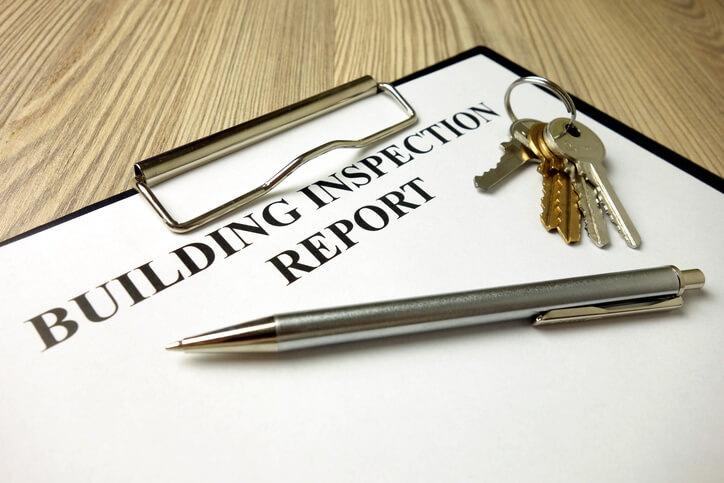
2. Adopt a Consistent, Clear, and Concise Writing Strategy
The effectiveness of home inspection report writing is compromised when its intended audience needs to understand the report’s content. This emphasizes the importance of unambiguous language in your writing. Consistently aim for clear and actionable communication in your writing, ensuring your intended message is conveyed effortlessly.
Avoid excessive technical jargon and other writing styles that may confuse the reader. Enhance the readability of your work by using bullet points to emphasize key findings. Include diagrams, images, and other visual means to enhance clarity. This helps your readers visualize listed points, from observed defects to areas that need further assessment.
Additionally, this approach streamlines the time required to review and act upon the insights presented in your report findings. Upon understanding the core messages of your report, clients can begin formulating and implementing strategies to remedy any identified issues.

3. Maintain Professionalism by Being Objective and Thorough
Your clients depend on your good judgment and perspective to make key decisions about various properties. This is why you must maintain the highest level of professionalism in your work. Professionalism means your work must be objective, factual, thorough, and truthful.
Maintain a focus on factual accuracy, steering clear of broad generalizations and personal opinions. Objectively present your findings, avoiding bias in your observations or repair recommendations. For instance, when detailing issues like foundation cracks, it is critical to specify their exact size and location for clarity and precision in your reporting.
In essence, endeavour to quantify your findings when necessary and to describe them with the relevant detail and perspective. As we do at NATS, any good home inspection college will teach you the value of objectivity; this knowledge always proves invaluable in the real world.
Are you interested in our home inspection courses?
Contact NATS for more information.

Buying a home is one of the most significant investments anyone can make in their lifetime. With so much at stake, there’s little, if any, room for error. Yet, the excitement of reaching such a crucial milestone can prevent home buyers from spotting defects in a home they’re interested in buying. This is where your training as a home inspector becomes crucial.
Far from being just another step in the process, a thorough home inspection can lead to substantial savings for the home buyer. This blog post highlights ways to save money for home buyers after your home inspection training.
Identification and Prevention of Issues
One of the primary duties of a home inspector after home inspector training is to uncover issues that may take time to be visible. These can range from faulty wiring to plumbing issues to structural problems. Catching these issues before finalizing the purchase can save the buyer from expensive repairs.
Beyond this, a comprehensive home inspection isn’t just about finding current issues; it’s also about helping homeowners prevent future problems. Inspectors are often required to provide tips on maintaining a home, which can save homeowners significant amounts in the long run. As an inspector, you might, for instance, need to advise home buyers on ensuring proper water drainage to protect the foundation.

If done correctly, newly installed features can save homeowners on energy bills. For instance, poorly sealed windows can leak heat in winter and cool air in summer. As an inspector, checking these installations can help save the buyer utility bills.
Home Inspection Training Provides Financial Leverage and Savings
Another effective way to save money for home buyers is by offering them negotiation leverage with detailed inspection reports. While it might look like it to potential buyers, there’s no such thing as a flawless house. Buyers can negotiate the purchase price more effectively with a detailed home inspection report. If the inspection reveals significant problems, buyers can request that the seller either make the repairs or reduce the price to compensate for the upcoming expenses.

Just as our home inspector courses emphasize, always remember to provide an estimation of the lifespan of the home’s major components, such as roofs, furnaces, or air conditioning units. With this knowledge, buyers can budget for future replacements or even factor them into their initial offer. Some insurance companies might also offer lower premiums for homes that have undergone a recent, thorough inspection, especially if potential hazards have been identified and rectified.
Avoidance of Bad Investments and Safety Assurance
In extreme cases, a home inspection might reveal that a property has so many issues it’s a potential money pit. Recognizing and pointing this out to buyers can save them from making a bad investment altogether.
It’s hard to put a price on safety. One thing you should always look out for as a home inspector when evaluating homes is potential safety risks, like radon, carbon monoxide, or mould. Spotting and addressing these issues early can avoid health-related costs and offer peace of mind to the homebuyer.
Are you interested in our world-class home inspection program?
Contact NATS for more information.
4 Red Flags To Look Out For in Basements After Home Inspection Training
June 28, 2023
Basements are an integral part of a home. They provide useful storage space, serve as a foundation for the entire structure, and house most of the home’s key functioning systems. Despite all of these, though, potential homebuyers tend to spend the least amount of time in basements and typically fail to notice issues with them.
As is often the case, this can be a mistake; a troubled basement is a fertile breeding ground for sickness-causing mould. It can also pose a fire hazard in the future, or, at the very least, cause homeowners to spend a lot on repairs. During your inspections, you’re responsible for making sure that your clients don’t fall into these types of traps. In this blog post, we will discuss four common red flags to look out for during basement inspections after your training.
1. Moisture and Water Intrusion Founded Through Home Inspection Training
One of the most critical issues to identify in basements is moisture and water intrusion. Excessive moisture can lead to mould growth, structural damage, and a host of other problems. Signs of moisture include water stains, dampness, musty odours, and efflorescence (white, powdery deposits on surfaces). During your inspection, pay close attention to the basement walls, floors, and ceiling for any visible signs of water intrusion. Additionally, inspect the perimeter for proper grading, functioning gutters, and adequate drainage systems.
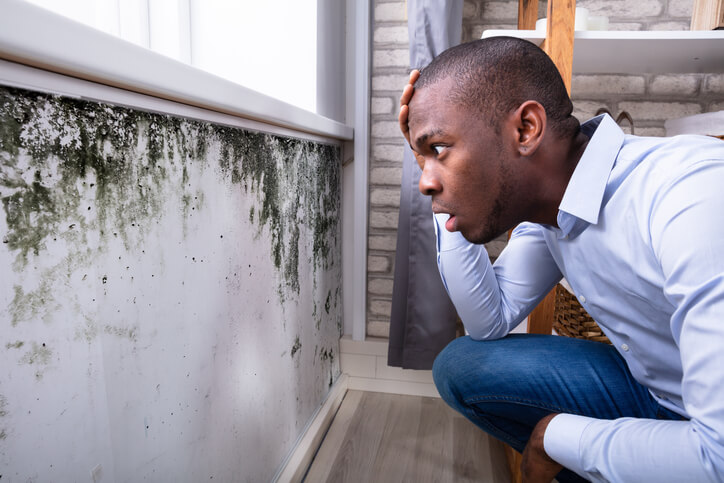
2. Foundation Cracks and Structural Issues
Just as you’ve learned during home inspection training, basements are susceptible to foundation cracks and structural problems due to soil movement, settling, or poor construction practices. These issues can compromise the stability and safety of the entire home. During your inspection, carefully examine the basement walls, floors, and foundation for any visible cracks, bulges, or signs of shifting. Horizontal cracks, widening cracks, or stair-step cracks are particularly concerning and should be evaluated by a structural engineer to determine their severity.
3. Home Inspection Training Highlights Inadequate Ventilation and Poor Air Quality
Basements often lack proper ventilation, leading to poor air quality and potential health hazards. Insufficient airflow can result in a buildup of moisture, stale air, and the proliferation of harmful substances such as radon gas. During inspections after your home inspection training, check for proper ventilation systems, including vents and exhaust fans, to ensure adequate air circulation. Consider conducting a radon test as well, as it is a colourless, odourless gas that can be harmful if present in high concentrations.
4. Electrical and Plumbing Issues
In addition, it is crucial to inspect the electrical and plumbing systems housed in basements. Outdated or faulty electrical wiring, exposed wires, improper grounding, and overloaded circuits can pose significant safety risks.
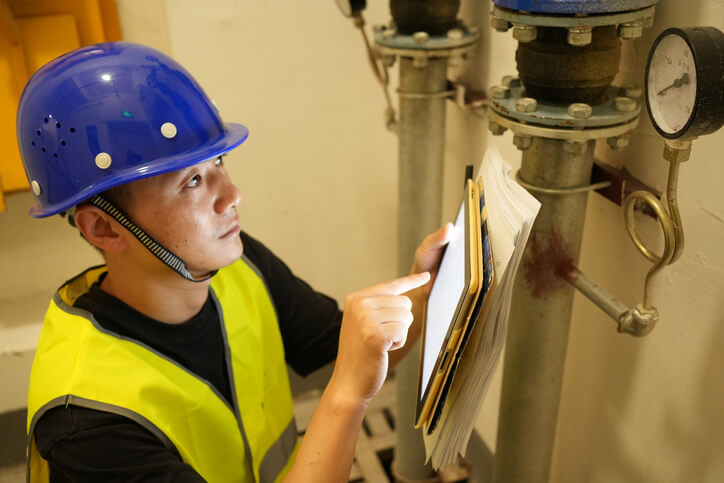
Carefully examine the electrical components for any signs of wear or potential hazards. Similarly, inspect the plumbing system for leaks, damaged pipes, and indications of water damage, which can lead to costly repairs and structural issues. Don’t forget to ensure that sump pumps, if present, are functioning properly to prevent basement flooding, which can cause extensive damage to the property. To ensure the basement’s safety and functionality, it is imperative to thoroughly inspect these systems.
Are you eager to learn more about a home inspection program?
Contact NATS for more information now!
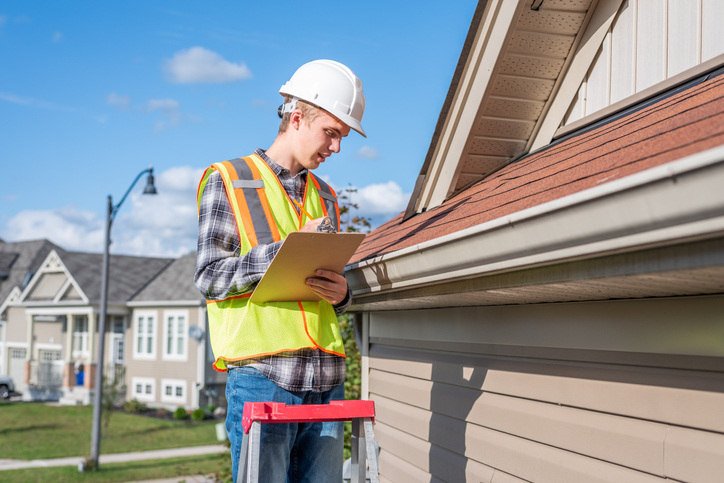
If you’re looking for a career that allows you to explore your interest in houses and construction with your desire to help others, home inspection is an excellent option to consider. This is a unique career path that will continue to be in high demand for the foreseeable future. People will always want to acquire property, and savvy buyers will typically seek a professional opinion to ensure that the condition of their prospective investment meets certain standards.
Home inspectors use their trained eyes to ensure that a house meets current standards for electrical systems, HVAC, plumbing, roofing, and structural codes. They identify danger signs or poor workmanship for home buyers seeking to make an informed decision about their purchase.
If you think this career path could be right for you, but you’re unsure of what it takes to succeed in this role, keep reading to learn about the characteristics of an effective home inspector.
1. You Have Strong Ethics and Integrity
Purchasing a home is one of the largest investments a person will make in their lifetime. Many offers are contingent on a passing grade on the home inspection. For this reason, home buyers will want to hire an inspector they can trust, and this trust is earned. Many motivations are at odds during the sale of a house. For instance, home sellers will sometimes make efforts to conceal defects in order to get the highest profit, or realtors may pressure you to pass a home in order to secure their commission.

After Home Inspector training, it will be essential to focus on the best interests of the home buyer despite other pressures and remain honest about the condition of the house they’re considering. This ensures that you uphold a positive reputation and avoid legal action. By joining a professional home inspection alliance, you can bolster the trust of your future clients. Our Home Inspection training program is recognized and recommended by the Canadian Association of Home & Property Inspectors in all provinces. By earning your diploma with us, you can start your career with reputability.
2. You’re an Effective Communicator
Spotting warning signs in a home only represents half of your job as an effective home inspector. Your ability to communicate your findings to clients is crucial since the main objective throughout your Home Inspector career is to keep home buyers informed. Many of your clients will be unfamiliar with building codes, the many systems that make a house operate effectively, and your inspection process. Surely, clients will appreciate your efforts to transform an otherwise overwhelming process into an accessible learning experience. Be sure to focus on meeting all clients where they are in terms of their knowledge about houses and the systems within them. Adjust accordingly, using analogies and vocabulary they’ll understand, explaining concepts as you go, and checking in to ensure that all questions are answered.
3. You Aspire to Have Your Own Business After Home Inspector Training
Though some home inspectors work as part of a team, most often, they are self-employed. As your own boss, you’ll be able to enjoy the freedom of setting your own hours and controlling the terms of your work. With this freedom comes the responsibility to exercise excellent organizational skills, marketing savvy, and independence.

After completing our Home Inspection training program, you’ll be equipped with the skills, knowledge, and hands-on practice you’ll need to confidently and competently take on the demands of a career in this field.
Are you ready to earn your Home Inspector diploma?
Contact NATS to learn how you can get started.
Home inspectors play an important role in the process of purchasing a home. They help buyers by ensuring that homes and investment properties do not contain serious issues–which could lead to expensive repairs down the road. After completing your home inspector training and earning your certification, you’ll be working with clients to examine all the details of homes–advising them accordingly. As a home inspector, it’s your responsibility to ensure that buyers are aware of the potential issues within their future home. Thus, it’s important to conduct a thorough inspection in which all problem areas are identified. Your findings will indicate the current living conditions of a home and will impact a buyer’s decision on whether to proceed with purchasing the home.
When conducting a home inspection, keeping a few important things in mind will enhance your ability to successfully account for all possible issues within a home. Check out the infographic below to discover five things you should remember once you begin your home inspector career.
[Infographic] 5 Things To Remember When Conducting a Home Inspection
Examine the Roof
When inspecting a home’s roof, check for:
- Leaks
- Dirty or clogged vents
- Missing, damaged, or loose shingles
- The integrity of the chimney’s structure
Did you know? 39% of home insurance claims involve roof problems.
Look Out for Drainage Problems
Drainage issues can lead to water damage. Look for:
- Functioning gutters and spouts
- Water damage beneath a home’s floor (use an infrared camera)
- Moisture stains on the ceiling
Check for Electrical Hazards
Ensure that a home’s electrical system is functioning properly by:
- Checking that the system is up to code
- Verifying that all light switches work
- Testing each electrical outlet
- Testing circuit breakers
Determine Whether the Foundation is Stable
A home’s foundation is vital to its safety and stability. Look for:
- Cracks
- Signs of water damage
- Sloping floors
Investigate for Health Hazards
Test for the following using the appropriate device:
- Radon
- Asbestos
- Lead (may be present in paint)
When you remember to check for these five things, you’ll be sure to conduct a thorough inspection!
Sources:
https://archive.curbed.com/2016/6/21/11925150/home-inspections-questions-checklist
https://www.cibc.com/en/personal-banking/mortgages/resource-centre/home-inspection.html
https://themortgagereports.com/37715/home-inspection-checklist-what-to-expect-on-inspection-day
4 Best Practices for Advising Clients After Home Inspection Training
February 15, 2023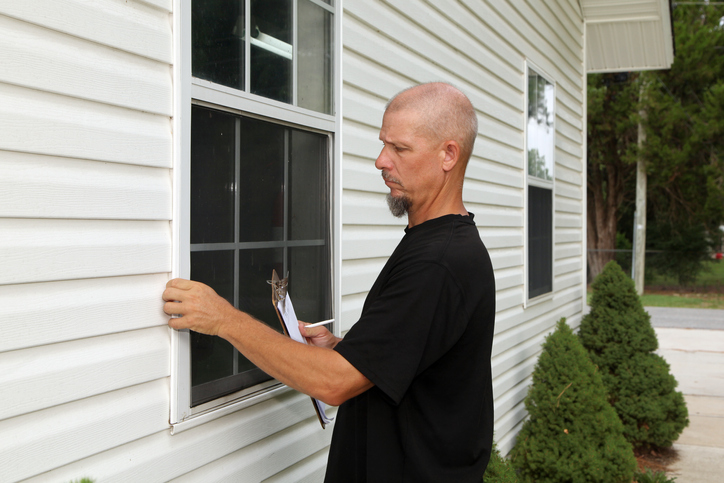
Once you become a Home Inspector, you will play an important role in a home buyer’s decision-making process, advising them on the home’s condition so they can make an informed purchasing decision. There are several best practices you should employ when advising future clients. These are rooted in excellent communication skills that your home inspector training will help you develop. Through them, you’ll be able to deliver the best possible service to your clients.
If you want to learn about these best practices, keep reading!
1. Don’t Overpromise and Underdeliver
As a Home Inspector, there will be things that you won’t be able to do while on the job. During your Home Inspector course, you’ll discover what those things are. For example, you can’t destroy or damage any property to inspect an aspect of the home. If it’s inaccessible, then it remains so. It’s important to make this clear to clients so they understand the full scope of your work and capabilities. If you tell them that you can do something when in fact, you know you can’t, you will be over-promising. Be sure to be clear in your communication because if you aren’t, this will lead to disappointment on the client’s side.

2. Maintain Professionalism After Home Inspector Training
You will inevitably encounter challenging clients during your time as a Home Inspector, but it’s how you communicate with them that’s important. You need to maintain your composure and act professionally at all times. During your training, you will learn various beneficial communication techniques. With unhappy clients, it will be vital to draw on them to navigate the situations professionally.
For example, if a client would like you to inspect an area that you’re unable to–whether it is unsafe or inaccessible–you can draw upon your communication skills to explain to the client that you’re not able to inspect that specific area and describe the reasons why. Providing a detailed explanation will allow the client to fully understand the scope of your work and why you’re unable to inspect some areas of a home. You may also suggest alternative options to the client, helping them get what they need without putting yourself at risk.
3. Ensure Clients Are Present During Home Inspections
This one might seem obvious, but it is important to try to do it with every client you have. When a client is there with you while you conduct the home inspection, they can ask questions and learn more about the process overall. If they only get the report, even if it is detailed and done thoroughly, it may not address a concern they would have had if they had been there. Utilizing the communication skills you mastered in training, you can accurately explain the situation to them during the inspection. This will help alleviate any concerns the client has and allow you to draw attention to what they should or should not be concerned about.

4. Always Be Transparent and Honest
When you become a Home Inspector, you will play a significant role in a client’s home buying decision. It’s essential to maintain transparency at all times about the situation of the home you’re inspecting. During Home Inspector training, you’ll be taught the value of transparency and clear communication with clients.
For example, you may find yourself working alongside a realtor that’s eager to make the sale. Having integrity means that if the inspection report comes up with issues, you must always be transparent about them to the client–putting them first. While the realtor may want to make the sale despite the issues, it is your responsibility to bring them to the clients’ attention regardless, allowing them to make the final decisions with a complete understanding of the home’s condition. Transparency is important in any role, but especially so when clients are making one of the most significant purchases of their lives and are entrusting you to provide all of the details needed to make an informed decision.
Are you ready to begin a Home Inspector Diploma program?
Contact NATS to learn how you can get started.
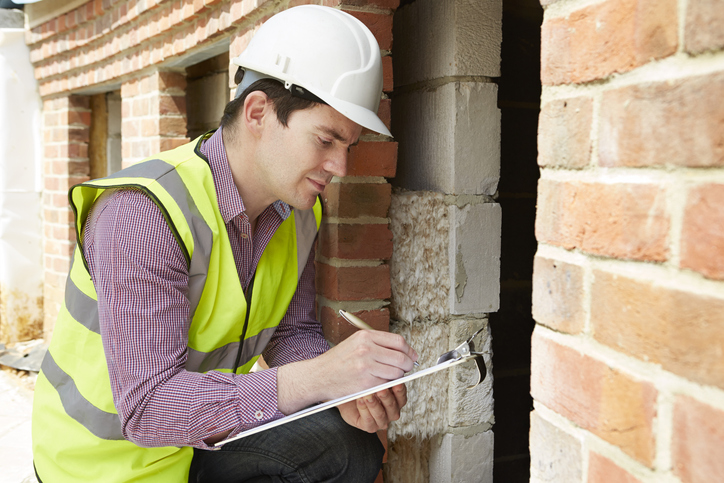
Home inspectors play a crucial role in the home-buying process by providing information to prospective home buyers about the conditions of the properties that they are interested in purchasing. These professionals carefully analyze every aspect of a property, including the electrical system, plumbing, roofing structure, heating, heating pumps, and the overall exterior and interior. A home inspector may also suggest solutions to problems they may see so that future homeowners can anticipate other costs associated with the house.
One of the great things about becoming a home inspector is that you can work independently and start your own business. However, starting a home inspector business can be challenging, so a clear plan needs to be devised and executed for the business to succeed. Are you considering starting your own business after home inspector training? Read on for some essential tips to consider.
Develop a Plan for Your Future Home Inspection Business
Every new business should have a plan set up to help guide the journey. A clear outline and goals will help drive your business idea forward after home inspector training. Your training will provide the knowledge and expertise you’ll need to thrive when starting your own business since you will have the skills to carry out jobs successfully.
A business plan will be useful for approaching banks and investors, walking them through your services, financial projections, marketing plans, and your overall strategy for achieving success. A good business plan must include the following components:
- An executive summary
- A description of your business
- Strategy and market analysis
- A good marketing and sales plan
- Your business management plan
- Descriptions of your services
- A thorough analysis of your competition
- Details on how you plan to operate your business
- Your financial needs and projections
- Documents and other items investors might want to see (permits, financial documents, marketing materials, etc.)

Effective Marketing That Sets Your Home Inspection Business Apart
Marketing is an effective way to promote your home inspection business so that home buyers are more likely to find your business instead of a competitor. Utilizing social media and a well-designed website will allow you to stand out from the competition.
Posting regularly and staying active on social media can help you build brand recognition as well as your following. Some ideas for social media posts include providing home buying and inspection tips to prospective clients and sharing customer reviews and testimonials. You can also share general content about your business and yourself, including any achievements from your home inspector courses. Some social media platforms you can make use of include Facebook, Instagram, and TikTok.

It’s also important to have a professional website for your business, where potential clients can find your contact information online, as well as other important details about your business, including prices, services, and more. Additionally, once you have a website, you can delve deeper into your marketing by creating a blog page with helpful information for clients, and you can optimize your site for SEO so that your business will be easier to find on search engines.
Contact Real Estate Agents After Home Inspector Training
Connecting with real estate agents can be mutually beneficial. Since real estate agents have access to multiple listings and clients interested in buying homes, they are in an ideal position to recommend your business to their clients. On the other hand, a home inspection is a critical part of buying a home, and real estate agents know that clients will need to have one conducted, so knowing a home inspector they trust and can recommend benefits them as well.
Maintain relationships with people you meet in your home inspector courses, as well as your clients and real estate agents you meet or have already worked with. This will help you meet more people in the industry and continue to build meaningful connections, and grow your network.
Do you want to become a home inspector?
Contact NATS to learn how you can get started.

A roof is a solid financial investment, but it’s not one that homeowners typically want to make immediately after purchasing a new home. Unfortunately, some homeowners find themselves having to deal with the fallout of a hasty purchase long after the deed has exchanged hands.
As a home inspector, it’s up to you to help your clients spot structural defects and other problems in any residence they’re looking to purchase. They will be counting on you to ensure that they don’t make a purchase that poses a financial and health risk to them.
A roof can have a variety of problems, especially if it’s getting old. Here are some of the most common ones to be on the lookout for as a home inspector.
1. Your Home Inspector Training Will Help You Spot Minor Leaks
A roof is approaching the tail end of its lifespan when it starts to leak. During the rainy seasons, leaks in a roof are easy enough to spot. On the flip side, you’ll need the insights gained during your home inspector training to spot leaks when it is not raining or snowing.
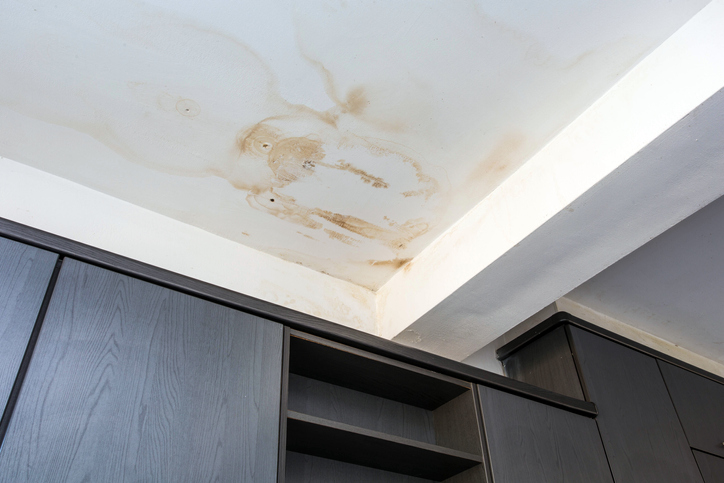
A leaky roof can damage the ambiance of a home, as well as the properties in the home. Even worse, a leak constitutes a health hazard to all the occupants of that home. And since the roof in question will need replacing, it is a major financial drain. As a home inspector, you’ll need to examine the roof of any property for signs of leakage. Pay particular attention to discolorations on ceilings; these are indications that water has been trapped on that spot. If any part of the roof is sagging, it’s likely to have suffered water damage.
2. Dark Spots on Ceilings and Walls
Dark spots on the ceilings and walls are a big red flag. These discolorations are visible signs of the presence of mould on the roof of the property. Mould is hard on the eyes, but it can do much worse than pose aesthetic problems. It can exacerbate respiratory conditions and ultimately damage the structural integrity of a home.

If you notice dark spots or damp smells in a house that your client is interested in purchasing, take a few extra moments to carry out a careful examination of those spots. Chances are those areas have been afflicted by a serious case of mould contamination. In that case, it would be in the best interest of your client to steer clear.
3. Granules in the Gutters
Granules coming off a newly-installed roof are nothing to worry about. However, if the roof is getting on in age, it should trigger warning bells during your home inspector career.
Granules appearing in the gutter indicate that the roof’s shingles are damaged. Without the granules, the shingles on a roof would deteriorate considerably faster, and the roof would need to be replaced earlier. Loose, curled, or damaged shingles provide the roof with inadequate protection against the elements–so it’s important to fix that problem earlier rather than later.
Are you ready to become a home inspector?
Contact NATS to get started.
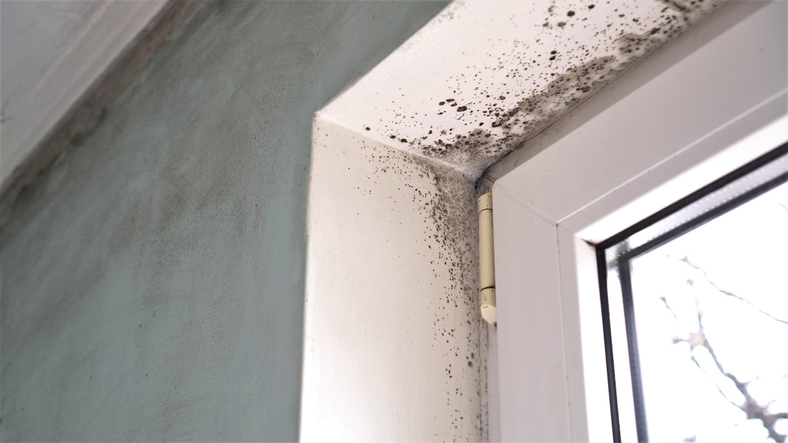
Are you looking forward to a career as a home inspector? If so, you will play a crucial role in the safety of the public. Your primary objective as a home inspector will be to serve as a consultant for home buyers seeking to make an informed decision about the residence they’re considering. Your expertise ensures that they don’t dig themselves into a financial hole, purchasing a home that will require expensive repairs or updates. Most importantly, you’ll make sure that your clients don’t purchase a home that poses a risk to their health and safety.
What kinds of risks should you be on the lookout for? While there is plenty to be aware of, dangerous mould will be a chief concern. What exactly is mould? What signs will alert you to a mould problem in a house? Keep reading for the answers to all of these questions below.
What Is Mould?
Mould is a type of fungi that can easily grow and reproduce in oxygen. It thrives in damp areas. In a natural environment, mould actually serves an important purpose in the ecosystem, aiding the decomposition of dead plants, animals, and other organic materials. That being said, when mould spores attach themselves to a building, they can pose a serious risk to the health of inhabitants.
Mould contamination can exacerbate respiratory conditions like asthma and allergies. Skin conditions, post-nasal drip, and flu symptoms are also not uncommon. There are multiple species of mould, but Penicillium, Cladosporium, and Aspergillus are most commonly found in buildings. Here are three signs to watch out for after home inspector training.
A Rotten or Musty Smell in the Air Could Be a Sign of Mould
Odour is one of the most obvious indications of mould–the smell of a mould-contaminated area is pretty distinct. You might notice a smell that resembles rotting or an odour that can only be described as damp. It’s common for the smell to come from carpets, cling to furniture, and spread from air conditioning and heating equipment, as these are all areas where mould spores can easily thrive and reproduce. Be sure to take a deep breath upon walking into a home you’re inspecting, and pay special attention to mould-friendly surfaces and basements, which are vulnerable to flooding and excessive moisture.

Watch Out for Warped Walls After Home Inspection Training
Warped walls are a visible clue you can easily spot after home inspector courses. You may see discoloration on walls and ceilings, bubbling paint, peeling wallpaper, the appearance of dark spots, cracks, and the loss of the wall’s original shape. These effects are a sign that mould is growing behind the walls. Over time, mould can weaken a home’s structure, making it more vulnerable to damage. As you can imagine, this will lead to a rather expensive repair process down the line.
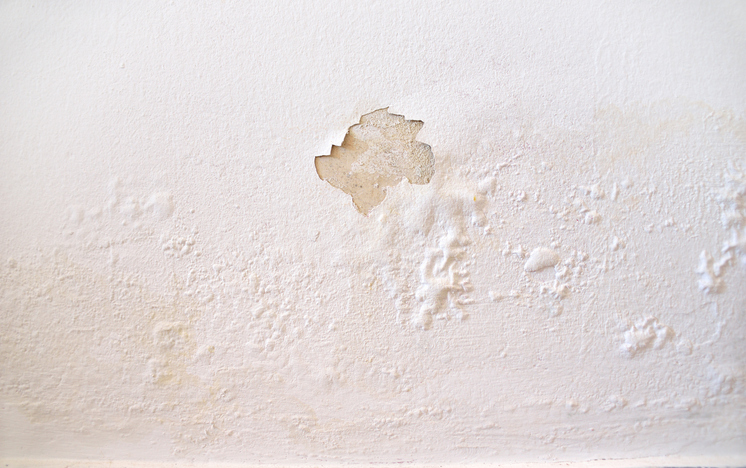
Be Aware of Past Water Damage
As a home inspector, you’ll learn that damage in a house can be sneaky, presenting very few evident signs like the ones discussed above. With mould, it can take years for any symptoms to show themselves. For this reason, it’s important to be as knowledgeable as possible of a house’s history to evaluate whether there is a risk of mould contamination.
Sometimes, information from sellers is limited–intentionally and unintentionally–so watch out for signs of water damage during your inspection, like flooding, discoloured walls, and damp walls. If you’re excited to learn more about home inspections, you’re in the right place. The Home Inspection Program at NATS is designed to address inspection methods for roofing, electrical, HVAC, plumbing, exterior, interior, and insulation in accordance with the Canadian Association of Home & Property Inspectors (CAHPI) standards.
Ready to become a home inspector?
Contact NATS for more information!
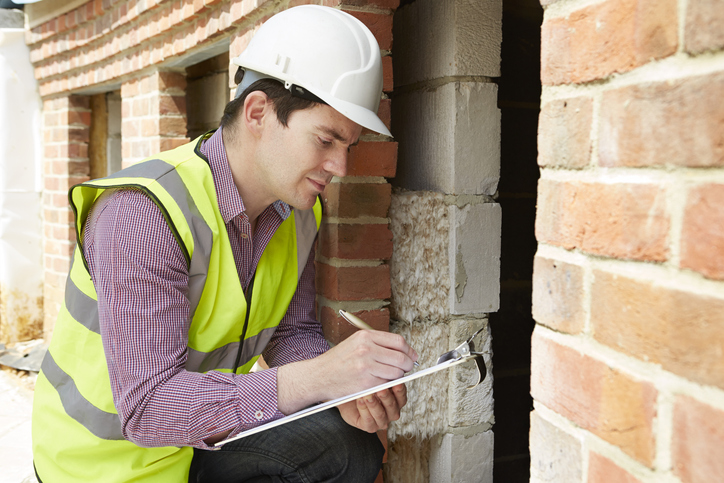
Homes are designed to last long and stand up to the elements, but even the most quality-built homes begin to falter as they age. Over time, these imperfections can seriously affect a house’s functionality and safety. If you’re considering a career as a home inspector, you will be responsible for finding these signs of aging for your clients during home inspections.
Throughout your training, you’ll learn all about the systems and components of a house, including roofing, structure, exterior, interior, insulation, and more. Upon completion, you’ll have a deep understanding of what you should look out for when you’re on the job–one of these things being signs indicating old age. Read on to learn 3 things you should watch for during home inspections that could signify old age.
1. Check For Water Stains When You Become a Home Inspector
As homes age, their roofs continually take the worst of the elements from outside. Over time, the roof may wear, and shingles may fall off, making way for leaks, which can cause significant damage to a home if they remain unchecked for too long.
Once you become a home inspector, it will be essential to inspect the roof for damaged or missing shingles. Aging shingles are more likely to have cracks that can allow water to pass through, while damaged shingles will begin to peel and curl as they wear down. These warning signs will let you know the roof needs to be repaired and provide insight into where water might have entered the home.

When water damage is combined with a lack of good ventilation in the home, the atmosphere can allow mould to grow – which can be dangerous to the health of the occupants. A quick way to identify whether a house might have mould is by its musty smell. If you think there may be mould, look for evidence within the house’s interior, especially in bathrooms, laundry rooms and other areas that tend to be humid. Signs to look out for are water stains or discoloured spots and stains on the walls and the ceiling, as well as sagging in the ceiling.
2. Check All of the Windows
Much like the roof of a home, windows take a lot o the brunt from outside conditions, as well. Over time, a poorly flashed or failing window will begin to leak. When you become a home inspector, it’s vital to begin your inspection with the home’s exterior. This way, you’ll be able to spot an old window. It will be thicker on the bottom than a modern window. It may still be in its original frame, displaying its age.
When wooden window frames are exposed to water, they begin to show signs of decay. If the wear is bad enough, the house water stains may appear close to the window. As an inspector, you’ll know this can indicate that:
- The window needs to be replaced.
- You should check the foundation for water damage. If there are water stains in the house, there is a good chance there is water damage elsewhere.
When you check the home’s interior, ensure no mould or dry rot surrounds the windows. Replacing an old window is quite the task, so your clients will appreciate knowing it may be a considerable task.
3. Look for Visible Cracks in the Foundation
In contrast to modern homes, older homes were mostly built using primitive concrete, which is more prone to breakage than the one that’s used today. As a result, when older homes move and settle, cracks can often form in their foundation, leading to issues further down the road.
Another issue to watch for after your home inspector training is the perimeter and underfloor drainage. In older homes, water can sometimes get stuck, often causing mould and decay to the foundation.
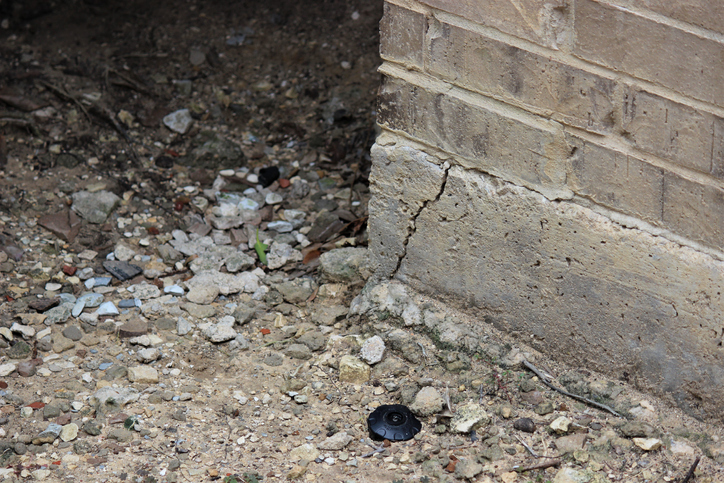
You will be able to spot a failing foundation with a few warning signs. During your inspection of a home’s exterior, you may notice visible cracks on the outside of the house, and inside, you may see slanted or bouncy floors.
Your training will teach you the ins and outs of home inspections, preparing you to enter this in-demand career.
Are you ready to start your home inspector career?
Contact NATS for more information.






